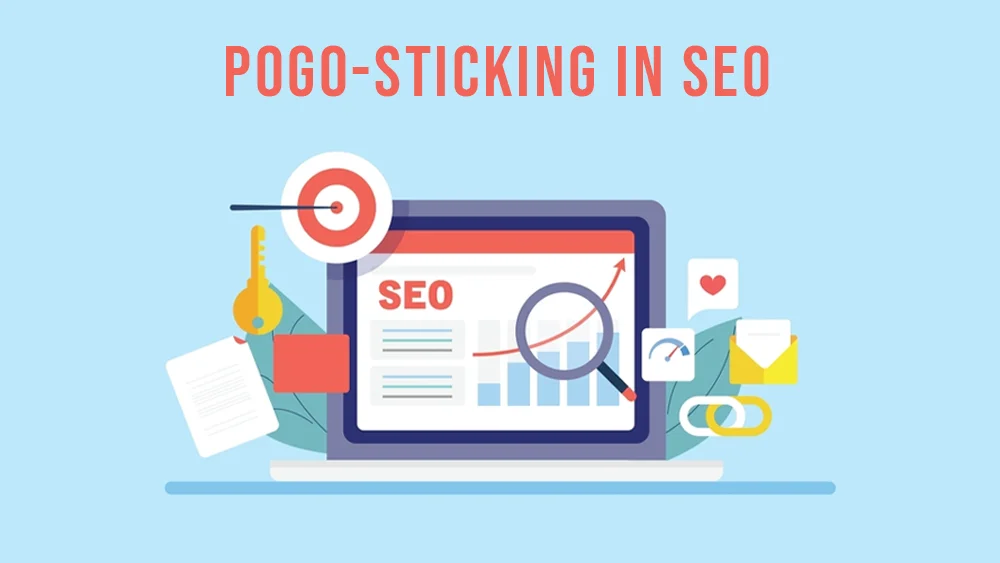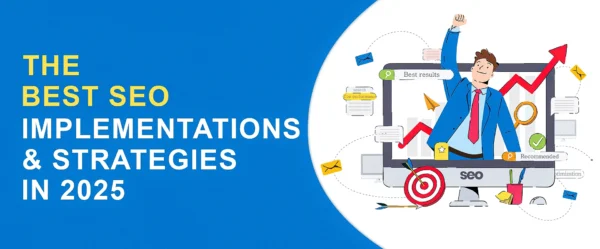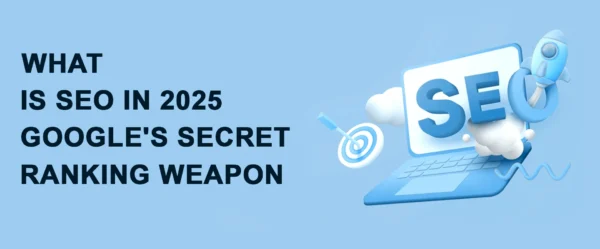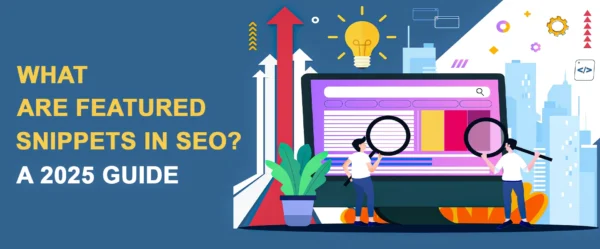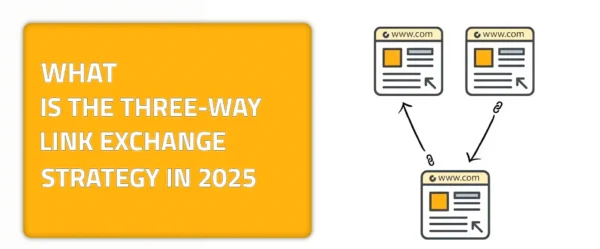Ever visited a website that had content that was of relevance to your search intent but couldn’t quite feel what it had to offer? Ever felt like the content you’re previewing isn’t satisfying enough? Did that ever make you bounce back and forth and jump between search engine result pages? If the answer is yes, then I salute you; you have experienced what we SEO specialists call pogo-sticking in SEO. But what is that? And more importantly, why am I dedicating a full guide for it? This is exactly what we will be covering in this guide.
Many assume that pogo-sticking is harmless. However, search engines like Google tend to track this behavior in a very detailed way. That is because pogo-sticking in SEO is often perceived as a sign that the search engine surfer or user couldn’t find what they were looking for. As a result, this indicates poor content relevance or quality. That is why understanding pogo-sticking in SEO is something that is of enormous importance for SEO professionals. That is, because it directly ties your website with user satisfaction. In order to learn more about it all, read on and dive deep with me on this topic to understand more.
Why Does Pogo-Sticking Matter?
So why should you understand and prioritize pogo-sticking in SEO? Well, because it directly affects how search engines see your site. A high pogo-sticking rate signals to Google that your content might not be of relevance for your user’s search intent or simply may not meet user expectations or satisfy their educational need. But what’s the downside to this? I know that my tone underlines a downside to it all. The downside is that pogo-sticking can decrease your ranking greatly. That is because Google perceives your website as one that doesn’t offer relevance or content that resonates with users. This is because Google notices that users consistently leave your sites within a matter of seconds for those reasons. That is why pogo-sticking in SEO is important to eliminate in order for your website to be perceived positively by search engines.
Simply put, pogo-sticking is like a red flag to search engines, indicating a mismatch between the content and the searcher’s intent. Imagine a user searching for “quick breakfast recipes” who clicks on a URL only to find that there are no detailed steps that could help them achieve or make a quick breakfast recipe. Wouldn’t that feel like something that is dissatisfying? If you type that for search engines, you would expect concise, well-detailed recipes and not a long-winded blog post that has no actionable information. In order to avoid or eliminate being a victim of pogo-sticking, you have to align your content with user intent. This will ensure that your visitors will find value and stay for a longer duration on your page.
The Difference Between Pogo-Sticking and Bounce Rate
Bounce rates and pogo-sticking are two things that have often been mistaken together. You have to make sure that you have a full understanding of what pogo-sticking is and what a bounce rate is first in order to be able to know the difference between them both. Let’s start with knowing what a bounce rate is exactly. A bounce rate measures the percentage of users who tend to leave your site after they view just one page. However, when compared with pogo-sticking, a bounce rate might actually sound more optimistic and positive. That is because people tend to link a bounce rate as a negative aspect, but the truth is, when you think about it, sometimes users just find exactly what they’re looking for on the first page. After that, they leave as they have gotten what they wanted. That is why bounce rates are not necessarily something bad.
Let me give you an example that demonstrates what I am saying in a better way. Let’s say someone wants to check the weather for the day. They click on one of the URLs that show weather forecasts, and when they do, they simply check the weather, get the information they need, and then exit. See? It doesn’t mean that they were frustrated and couldn’t find what they were looking for. However, if they click back to search and try another link, it suggests they didn’t find the weather information helpful. And that is the reason why I am saying that knowing the difference between them makes all the difference in the world of SEO and its optimization process.
Common Causes of Pogo-Sticking
What drives users to pogo-stick? Well, there are several factors that contribute to having pogo-sticking in your SEO. Here are some for your knowledge:
- Misleading Titles: Promising one thing in your title is something and delivering another information is another thing. This is what some would consider misleading and cause them to leave your website to search for something else that could be of benefit for them.
- Slow Load Times: Users won’t wait for a page that takes forever to load. You have to admit that this is a process that frustrates us all and would leave us either looking for another site or simply giving up the whole search process.
- Poor Content Quality: Thin, generic, or unhelpful content drives users away. That is why your content has to be of high quality and benefit users. In order for them to stay on your page and for search engines to notice your site as one that offers real value for your visitors.
- Intrusive Pop-Ups: Nobody wants to be bombarded with ads before even reading the first sentence. It is crucial that you strategize your ads and include them in a way that won’t drive people away the second they click on your site.
- Irrelevant Search Results: If your content doesn’t match the user’s query, they’ll leave immediately. No one will stay to read something that they are not interested in.
Let’s say a user searches for “best smartphones under $500” and lands on a page listing only outdated models. They’ll likely pogo-stick until they find a site offering current recommendations. When you identify these causes and address them, you will be able to drastically reduce pogo-sticking rates. Additionally, search engines will keep your rank or even increase it as they will see that you offer something of real and true value for search engine surfers.
How Pogo-Sticking Affects Your SEO Rankings
Google’s algorithm is designed to prioritize user satisfaction. This is the main priority that Google focuses on. That is why, if you are experiencing pogo-sticking in SEO, Google or any other search engine can see it as a strong indication sign that your site is not meeting your user needs. If this happens repeatedly, search engines may feel that a demotion for your page’s ranking is the only option that will give you a heads up.
Something that neither you nor I want for your website’s ranking rate. Let me walk you through a hypothetical example that may help you understand what I am talking about further. If you have a blog site about “technological advancement trends” but users tend to repeatedly pogo-stick to other results, Google may demote your website from, let’s say, the third to the eighth or even move you to a more delayed SERP.
This will make Google see your competitors as more worthy of the rank and actually move on, putting them under the spotlight instead of you. In order to avoid this, you have to focus on creating high-quality content with search intents on your mind. You have to make your content engaging enough for people to stay. In order to do so, you can use the aid of visuals, videos, and infographics. Also enhance your page’s loading speed to avoid any loading or waiting frustration from the user’s end.
Tips to Reduce Pogo-Sticking on Your Website
To tackle pogo-sticking, you need to optimize your website for user satisfaction. Here are some tips and tricks that can help you get started when creating your site’s SEO strategy:
- Understand Search Intent: Ensure your content answers the user’s query.
- Improve Page Speed: Slow pages kill engagement; use tools like Google PageSpeed Insights to optimize load times.
- Write Clear and Compelling Titles: Your title should accurately reflect the content.
- Enhance User Experience (UX): Make navigation seamless with intuitive menus and CTAs.
- Offer Engaging Content: Use visuals, bullet points, and examples to keep users hooked.
For example, if you’re creating a blog on “how to grow Aztec Cactus,” include photos of the plants, a step-by-step guide, and a FAQ section. When you include such details, you not only answer your user queries, but you also encourage visitors to further explore your website; they might even click on something that is related. Like a blog article about growing a different plant or a blog about how to maintain your plants through a gardening tips guide.
Wrapping It Up!
Pogo-sticking isn’t just an SEO challenge. It is an opportunity to refine your content, improve the user experience, and climb the search rankings ladder. With a focus on delivering value and meeting user intent, you can keep visitors engaged and satisfied with your content. If you’re looking for a comprehensive solution that will help you understand the folds of SEO deeper and provide you with the right services that will help you enhance your SEO game, check out our platform, linkexchange.ai. This is a platform that will help you learn more about how to succeed with your website. With our comprehensive blog and excellent services, there is nothing that you will miss. Join us now and explore our platform for better SEO and ranking.


